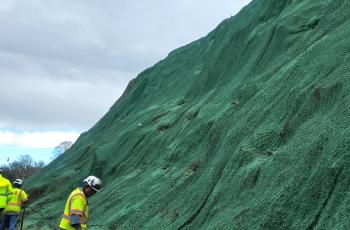Testing Shows Significant Decline in Drinking Water Lead Levels
DC Water reminds customers that lead sources are different in each property and urges residents to eliminate lead pipes and plumbing materials in their homes. Recent results from the utilitys required lead testing program mark the lowest lead levels measured in the last decade. Levels have continued to decline since 2004, when the water treatment process began including a corrosion control additive to reduce lead release in water. Since 2003, DC Water has replaced more than 19,000 lead service pipes on public property, representing the removal of nearly 115 miles of lead pipes that connect public water mains to household plumbing. DC Water replaces lead service pipes during water main upgrades or when customers choose to replace their portion of pipe on private property.
Drinking water is lead-free when it leaves the treatment plant and travels through the distribution system, but lead can dissolve when the water comes in contact with household lead service pipes or plumbing fixtures that contain lead. We take our customers health very seriously, commented Chief Executive Officer and General Manager George S. Hawkins. We provide free lead test kits to help customers identify sources of lead in their homes, and we strongly encourage our customers to contact us for guidance on the removal of lead sources. When samples have elevated levels of lead, DC Water offers a plumbing inspection and more extensive testing at no charge. To order a free lead test kit, customers can contact the Drinking Water Division at 202-612-3440.
In addition to the voluntary lead testing program, DC Water tests more than 100 homes across the city every 6 months. This testing is required by the U.S. Environmental Protection Agency (EPA) Lead and Copper Rule and results show that measured concentrations have reached historically low levels. The 90th percentile was 4 parts per billion (ppb) for the most recent reporting period, which means that at least 90 percent of the homes that DC Water tested were well below the EPAs action level of 15 ppb. For more information about DC Waters voluntary and required lead testing programs, visit www.dcwater.com/lead.
IMPORTANT CUSTOMER INFORMATION:
DC Waters required lead monitoring program only measures the lead level in a fraction of District households, so it is critical that customers determine if there are any sources of lead in their homes. For tips on removing lead sources, download the DC Water brochure, Tips to Reduce Lead in Drinking Water (link provided below).
If you have any questions about lead in drinking water, please contact the Drinking Water Division at 202-612-3440 (Monday through Friday, 8 a.m. to 4:30 p.m.). All other questions or suggestions should be directed to DC Water Customer Service at 202-354-3600 (Monday through Friday, 8 a.m. to 5 p.m.) or the 24-Hour Command Center at 202-612-3400. Information is also available at www.dcwater.com/lead/minimizing.cfm.







